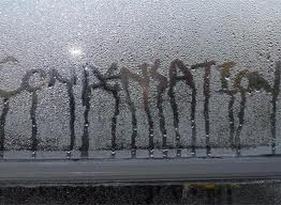
One of the easiest ways to reduce solar heat gain and subsequent energy costs is as simple as planting a tree. The strategic placement of trees, known as landscape shading or tree shading, is a technique used to provide shade from the warm summer sun. Unobstructed solar heat can significantly increase indoor air temperature, which will frustrate efforts to keep the house cool. However, appropriate tree placement can reduce indoor temperatures by up to 9° F(12° C) through evapotranspiration -- the process by which a plant releases water vapor -- as well as the shade provided by the tree.
According to the U.S. Department of Energy (DOE), air temperatures directly under trees can be as much as 25° cooler than air temperatures above nearby blacktop. Also, shade trees can reduce cooling costs by as much as 10%, which is important because the average home devotes almost a fifth of its energy expenditure to cooling.
Researchers from the National Institute of Standards and Technology and the U.S. Department of Agriculture conducted the first large-scale study on landscape shading in 2007. In Sacramento, Calif., 460 houses were studied over the summer to discover whether well-placed shade trees could reduce energy costs, as well as atmospheric carbon. Their specific findings were as follows:
Other considerations for the homeowner:
Savings will vary, depending on where you live, but a mature tree that was strategically placed has shown to trim cooling costs by as much as $400 per year.
For questions concerning property inspections, or to schedule your property inspection, contact Bennett Property Inspection today at (813) 260-9920.
Article Source:InterNACHI
According to the U.S. Department of Energy (DOE), air temperatures directly under trees can be as much as 25° cooler than air temperatures above nearby blacktop. Also, shade trees can reduce cooling costs by as much as 10%, which is important because the average home devotes almost a fifth of its energy expenditure to cooling.
Researchers from the National Institute of Standards and Technology and the U.S. Department of Agriculture conducted the first large-scale study on landscape shading in 2007. In Sacramento, Calif., 460 houses were studied over the summer to discover whether well-placed shade trees could reduce energy costs, as well as atmospheric carbon. Their specific findings were as follows:
- Trees planted on the west and south sides of a house decreased summertime electricity use, while trees planted on the north actually increased energy consumption. Trees planted on the east side had no effect.
- Fast-growing trees are better energy-savers than slower-growing trees.
- Placement of the trees, particularly their proximity to the house, is a significant factor in their effectiveness as shade trees.
- Dense evergreen trees and shrubs will provide continuous shade and block heavy winds.
- Deciduous trees can be used to block solar heat in the summer while they let much of it in during the winter. In the summer, the leaves of deciduous trees will protect the home from the heat of the sun, and in the cold of winter, the leaves will fall from the trees and allow the sunlight to keep your home warmer.
- Shrubs and ground cover plants can be used to shade the ground and pavement around the home. Use a large bush or row of shrubs to shade a patio or driveway. Plant a hedge to shade a sidewalk. Build a trellis for climbing vines to shade a patio area.
- Vines can shade walls quickly, often during their first growing season. A lattice or trellis with climbing vines, or a planter box with trailing vines, will shade the home's perimeter while admitting cooling breezes to the shaded area.
- Shrubs planted close to the house will fill in rapidly and begin shading walls and windows within a few years.
Other considerations for the homeowner:
- To effectively employ landscape shading, you must plan out the location, size and shape of the shadows cast by your trees and shrubs.
- Get to know your climate and microclimate before attempting to reduce energy bills through landscape shading. Homes in cool regions may not require any shading, while other homes may require only moderate shading.
- Fast-growing trees will begin shading your house quickly, but slow-growing trees will generally live longer. They are also more drought- and insect-resistant while less being prone to limb breakage by windstorms due to their deep root structure. A 6-foot to 8-foot (1.8-meter to 2.4-meter) deciduous tree will shade the roof in five to 10 years, depending on the species and the home. The Southern magnolia, for instance, will grow relatively slowly but will eventually reach an impressive 30 feet high, supported by a deep and sturdy root structure. Meanwhile, the faster-growing cherry plum will rise to a height of a more modest 20 feet.
- If wetness and humidity are already a problem, it might make the issue worse to allow dense foliage to grow immediately next to your home. Well-landscaped homes in wet areas allow winds to flow around the home, keeping the home and its surrounding soil reasonably dry. Be sure to ask your InterNACHI inspector during your next scheduled inspection about moisture-related problems in your home.
- Aesthetics can be enhanced through landscape shading. Vines, in particular, are functional elements that can greatly augment a home’s historical or natural appeal.
Savings will vary, depending on where you live, but a mature tree that was strategically placed has shown to trim cooling costs by as much as $400 per year.
For questions concerning property inspections, or to schedule your property inspection, contact Bennett Property Inspection today at (813) 260-9920.
Article Source:InterNACHI


 RSS Feed
RSS Feed

